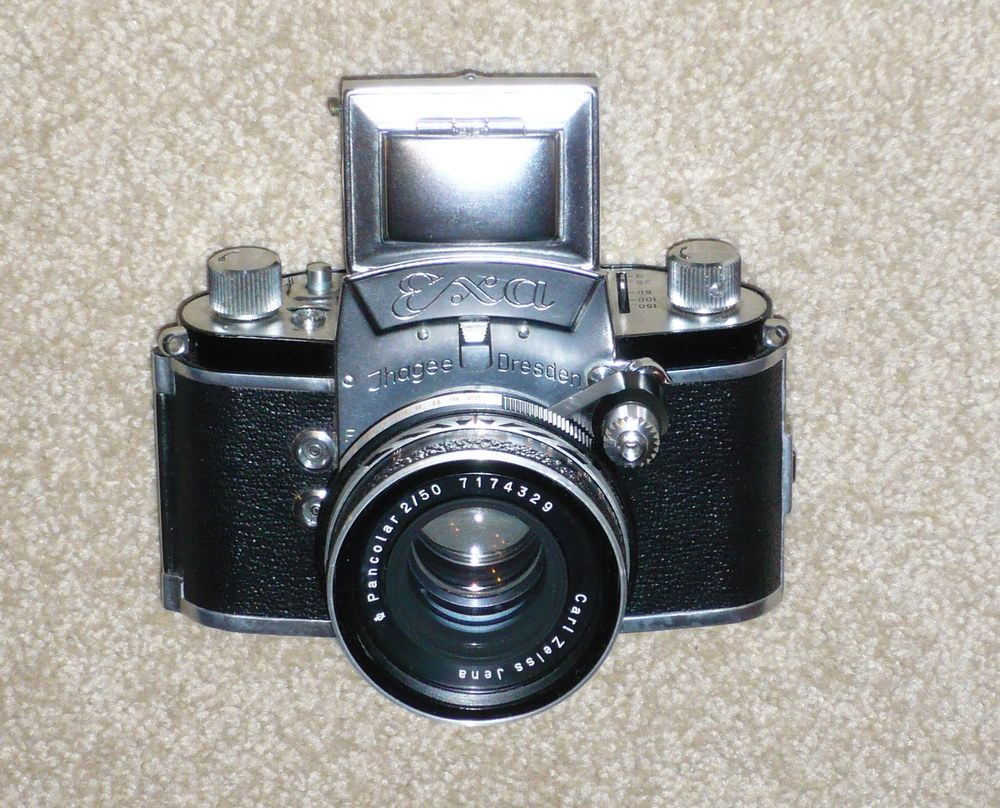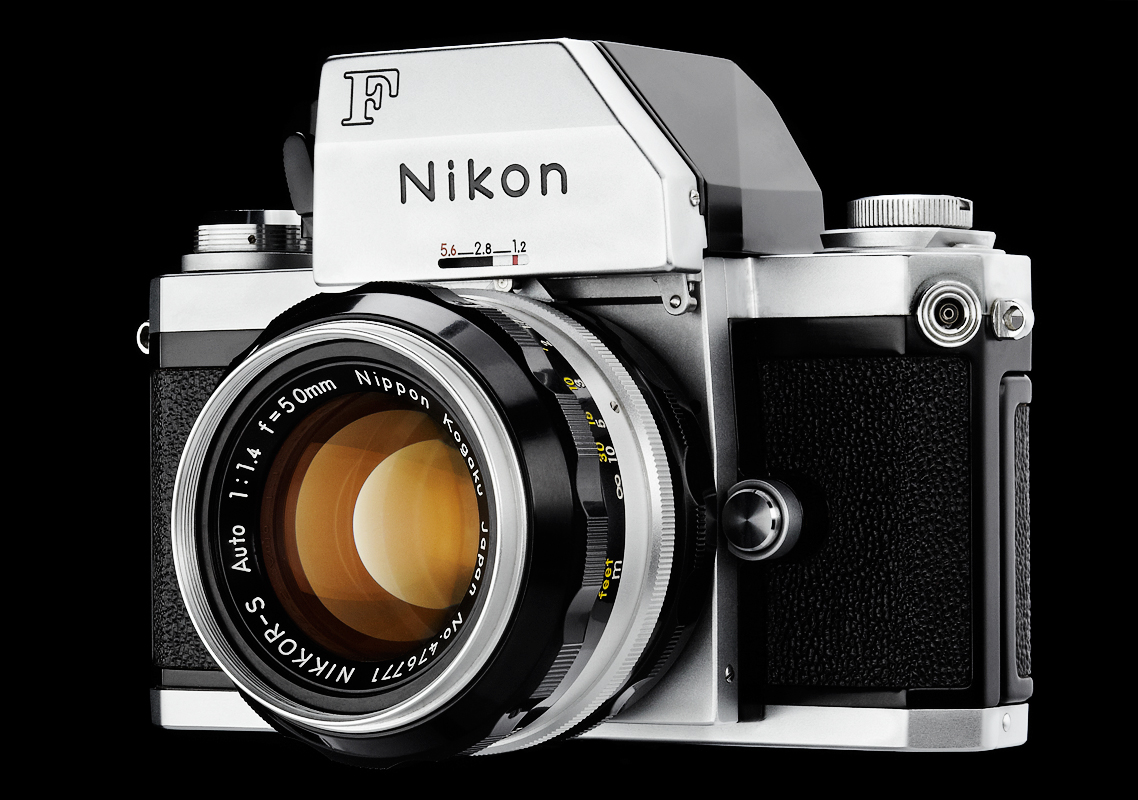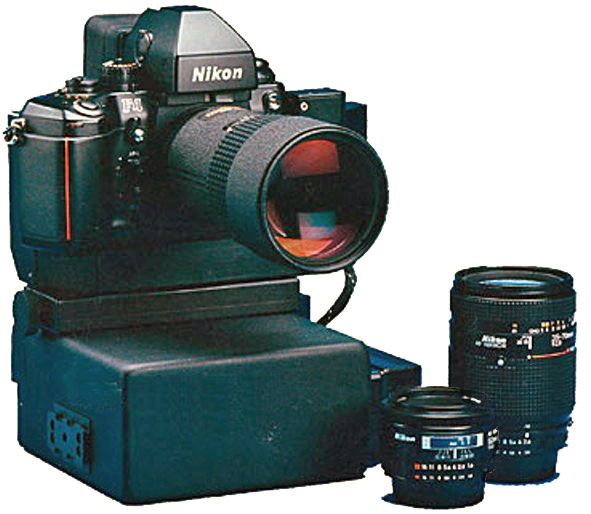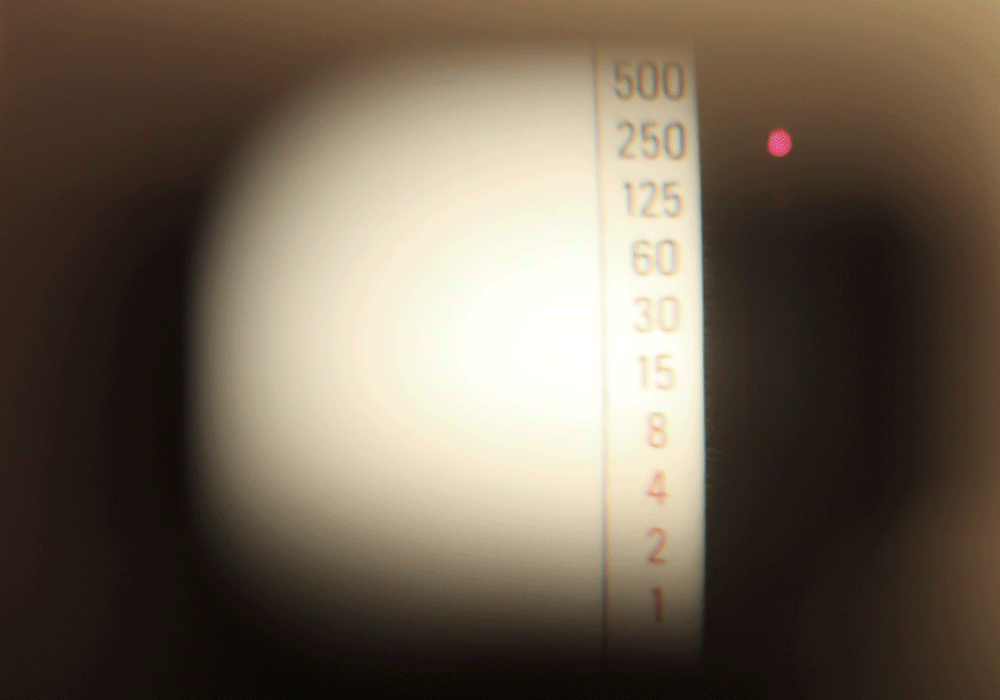|
Nikon F100
The Nikon F100 is a 35 mm film-based single-lens reflex camera body introduced in 1999. It is often thought of as a scaled-down version of the Nikon F5, and as a precursor to the Nikon F6. The F100 was discontinued, along with most other Nikon film cameras, in 2006. Design and construction The F100's metering system is a development of Nikon's matrix metering technology introduced in 1983 on the Nikon FA. The meter in the F100 uses a 10 segment light sensor and uses distance information from Nikon D-type and G-type lenses for more accurate exposure calculations when using direct flash. In addition to matrix metering, the F100 also offers standard center-weighted and spot metering modes. Also incorporated into the camera is Nikon's Dynamic Autofocus system and a 4.5 frame per second motor drive with automatic rewind. The top motor drive speed can be boosted to 5 frames per second with the addition of the Nikon MB-15 battery pack. The F100 also provides many features which ... [...More Info...] [...Related Items...] OR: [Wikipedia] [Google] [Baidu] |
Nikon (company)
(, ; ), also known just as Nikon, is a Japanese multinational corporation headquartered in Tokyo, Japan, specializing in optics and imaging products. The companies held by Nikon form the Nikon Group. Nikon's products include cameras, camera lenses, binoculars, microscopes, ophthalmic lenses, measurement instruments, rifle scopes, spotting scopes, and the steppers used in the photolithography steps of semiconductor fabrication, of which it is the world's second largest manufacturer. The company is the eighth-largest chip equipment maker as reported in 2017. Also, it has diversified into new areas like 3D printing and regenerative medicine to compensate for the shrinking digital camera market. Among Nikon's many notable product lines are Nikkor imaging lenses (for F-mount cameras, large format photography, photographic enlargers, and other applications), the Nikon F-series of 35 mm film SLR cameras, the Nikon D-series of digital SLR cameras, the Nikon Z-series ... [...More Info...] [...Related Items...] OR: [Wikipedia] [Google] [Baidu] |
Nikon F-mount
The Nikon F-mount is a type of interchangeable lens mount developed by Nikon for its 35mm format single-lens reflex cameras. The F-mount was first introduced on the Nikon F camera in 1959, and features a three-lug bayonet mount with a 44mm throat and a flange to focal plane distance of 46.5mm. The company continues, with the 2020 D6 model, to use variations of the same lens mount specification for its film and digital SLR cameras. History The Nikon F-mount is one of only two SLR lens mounts (the other being the Pentax K-mount) which were not abandoned by their associated manufacturer upon the introduction of autofocus, but rather extended to meet new requirements related to metering, autofocus, and aperture control. The large variety of F-mount compatible lenses makes it the largest system of interchangeable flange-mount photographic lenses in history. Over 400 different Nikkor lenses are compatible with the system. The F-mount is also popular in scientific and industrial a ... [...More Info...] [...Related Items...] OR: [Wikipedia] [Google] [Baidu] |
Japan
Japan ( ja, 日本, or , and formally , ''Nihonkoku'') is an island country in East Asia. It is situated in the northwest Pacific Ocean, and is bordered on the west by the Sea of Japan, while extending from the Sea of Okhotsk in the north toward the East China Sea, Philippine Sea, and Taiwan in the south. Japan is a part of the Ring of Fire, and spans an archipelago of 6852 islands covering ; the five main islands are Hokkaido, Honshu (the "mainland"), Shikoku, Kyushu, and Okinawa. Tokyo is the nation's capital and largest city, followed by Yokohama, Osaka, Nagoya, Sapporo, Fukuoka, Kobe, and Kyoto. Japan is the eleventh most populous country in the world, as well as one of the most densely populated and urbanized. About three-fourths of the country's terrain is mountainous, concentrating its population of 123.2 million on narrow coastal plains. Japan is divided into 47 administrative prefectures and eight traditional regions. The Greater Tokyo Ar ... [...More Info...] [...Related Items...] OR: [Wikipedia] [Google] [Baidu] |
Photographic Film
Photographic film is a strip or sheet of transparent film base coated on one side with a gelatin emulsion containing microscopically small light-sensitive silver halide crystals. The sizes and other characteristics of the crystals determine the sensitivity, contrast, and resolution of the film. The emulsion will gradually darken if left exposed to light, but the process is too slow and incomplete to be of any practical use. Instead, a very short exposure to the image formed by a camera lens is used to produce only a very slight chemical change, proportional to the amount of light absorbed by each crystal. This creates an invisible latent image in the emulsion, which can be chemically developed into a visible photograph. In addition to visible light, all films are sensitive to ultraviolet light, X-rays, gamma rays, and high-energy particles. Unmodified silver halide crystals are sensitive only to the blue part of the visible spectrum, producing unnatural-looking rendit ... [...More Info...] [...Related Items...] OR: [Wikipedia] [Google] [Baidu] |
Single-lens Reflex Camera
A single-lens reflex camera (SLR) is a camera that typically uses a mirror and prism system (hence "reflex" from the mirror's reflection) that permits the photographer to view through the lens and see exactly what will be captured. With twin lens reflex and rangefinder cameras, the viewed image could be significantly different from the final image. When the shutter button is pressed on most SLRs, the mirror flips out of the light path, allowing light to pass through to the light receptor and the image to be captured. History File:Hasselblad 1600F.jpg, Medium format SLR by Hasselblad (Model 1600F), Sweden File:Zenza BRONICA S2 with ZENZANON 100mm F2.8.JPG, Medium format SLR by Bronica (Model S2), Japan. Bronica's later model—the Bronica EC—was the first medium format SLR camera to use an electrically operated focal-plane shutter File:Asahiflex600.jpg, The 1952 ( Pentax) Asahiflex, Japan's first single-lens reflex camera. File:Contaflex BW 2.JPG, The Contaflex III ... [...More Info...] [...Related Items...] OR: [Wikipedia] [Google] [Baidu] |
Nikon F5
The Nikon F5 is a 35 mm film-based single-lens reflex camera body manufactured by Nikon from 1996 through 2004. It was the fifth in Nikon's professional film camera line, which began in 1959 with the Nikon F. It followed the Nikon F4 of 1988, which had introduced in-body autofocus to Nikon's professional line. The F5 was in turn succeeded by the Nikon F6, as well as Nikon's parallel range of professional digital SLRs, beginning with the Nikon D1. Design Important advances in the F5 included: * Nikon 3-D color matrix meter (the F4 had introduced multi-segment matrix metering to the F series, but color sensing was new). * A self-diagnostic and self-adjusting shutter. * A mirror-balance system that reduced camera shake. * Electronically controlled exposure times from 1/8000 second to 30 seconds. * Built-in 8 frame per second motor drive (up from 5.7 frame/s on the F4). * 1/300 second flash sync (up from 1/250 on the F4). However, at 1/300 second, flash units could not use their f ... [...More Info...] [...Related Items...] OR: [Wikipedia] [Google] [Baidu] |
Nikon F6
The Nikon F6 is a 35 mm film single-lens reflex camera body manufactured by Nikon between 2004 and 2020. It is the sixth top-of-the-line professional film camera in Nikon's line. The Nikon F6 is designed by Nikon and was manufactured at their Sendai Plant. The F6 is the most recent model of Nikon's F series and was discontinued in October 2020. It replaced the Nikon F5, manufactured from 1996 to 2004. The Nikon F6's unique feature is that it accepts any Nikon F-mount lens with full metering functionality, with an exception for non-AI. At the time it was discontinued, the F6 was the last remaining film SLR still in production. Camera features * Focusing screen: B-type BriteView Clear Matte Screen II, interchangeable with six other optional focusing screens * Viewfinder frame coverage: Approx. 100% * Finder magnification: Approx. 0.74x with 50 mm lens set to infinity at -1.0m-1 * Autofocus: TTL phase detection, Nikon Multi-CAM2000 autofocus module * Autofocus detection ran ... [...More Info...] [...Related Items...] OR: [Wikipedia] [Google] [Baidu] |
Nikon
(, ; ), also known just as Nikon, is a Japanese multinational corporation headquartered in Tokyo, Japan, specializing in optics and imaging products. The companies held by Nikon form the Nikon Group. Nikon's products include cameras, camera lenses, binoculars, microscopes, ophthalmic lenses, measurement instruments, rifle scopes, spotting scopes, and the steppers used in the photolithography steps of semiconductor fabrication, of which it is the world's second largest manufacturer. The company is the eighth-largest chip equipment maker as reported in 2017. Also, it has diversified into new areas like 3D printing and regenerative medicine to compensate for the shrinking digital camera market. Among Nikon's many notable product lines are Nikkor imaging lenses (for F-mount cameras, large format photography, photographic enlargers, and other applications), the Nikon F-series of 35 mm film SLR cameras, the Nikon D-series of digital SLR cameras, the Nikon Z-series of ... [...More Info...] [...Related Items...] OR: [Wikipedia] [Google] [Baidu] |
Metering Mode
In photography, the metering mode refers to the way in which a camera determines exposure. Cameras generally allow the user to select between ''spot'', ''center-weighted average'', or ''multi-zone'' metering modes. The different metering modes allow the user to select the most appropriate one for use in a variety of lighting conditions. In complex light situations professional photographers tend to switch to manual mode, rather than depending on a setting determined by the camera. Examples of metering modes Spot metering With spot metering, the camera will measure only a very small area of the scene (1–5% of the viewfinder area). By default this is the centre of the scene. The user can select a different off-centre spot or recompose by moving the camera after metering. Certain models support a mode which allows averaging of multiple spot meter readings, and some support metering of highlight and shadow areas. Spot metering is not influenced by other areas in the frame. I ... [...More Info...] [...Related Items...] OR: [Wikipedia] [Google] [Baidu] |
Nikon FA
(, ; ), also known just as Nikon, is a Japanese multinational corporation headquartered in Tokyo, Japan, specializing in optics and imaging products. The companies held by Nikon form the Nikon Group. Nikon's products include cameras, camera lenses, binoculars, microscopes, ophthalmic lenses, measurement instruments, rifle scopes, spotting scopes, and the steppers used in the photolithography steps of semiconductor fabrication, of which it is the world's second largest manufacturer. The company is the eighth-largest chip equipment maker as reported in 2017. Also, it has diversified into new areas like 3D printing and regenerative medicine to compensate for the shrinking digital camera market. Among Nikon's many notable product lines are Nikkor imaging lenses (for F-mount cameras, large format photography, photographic enlargers, and other applications), the Nikon F-series of 35 mm film SLR cameras, the Nikon D-series of digital SLR cameras, the Nikon Z-series ... [...More Info...] [...Related Items...] OR: [Wikipedia] [Google] [Baidu] |
Spot Metering
In photography, the metering mode refers to the way in which a camera determines exposure. Cameras generally allow the user to select between ''spot'', ''center-weighted average'', or ''multi-zone'' metering modes. The different metering modes allow the user to select the most appropriate one for use in a variety of lighting conditions. In complex light situations professional photographers tend to switch to manual mode, rather than depending on a setting determined by the camera. Examples of metering modes Spot metering With spot metering, the camera will measure only a very small area of the scene (1–5% of the viewfinder area). By default this is the centre of the scene. The user can select a different off-centre spot or recompose by moving the camera after metering. Certain models support a mode which allows averaging of multiple spot meter readings, and some support metering of highlight and shadow areas. Spot metering is not influenced by other areas in the frame. I ... [...More Info...] [...Related Items...] OR: [Wikipedia] [Google] [Baidu] |
Bracketing
In photography, bracketing is the general technique of taking several shots of the same subject using different camera settings. Bracketing is useful and often recommended in situations that make it difficult to obtain a satisfactory image with a single shot, especially when a small variation in exposure parameters has a comparatively large effect on the resulting image. Given the time it takes to accomplish multiple shots, it is typically, but not always, used for static subjects. Autobracketing is a feature of many modern cameras. When set, it will automatically take several bracketed shots, rather than the photographer altering the settings by hand between each shot. Types of bracketing Exposure bracketing Image:StLouisArchMultExpEV-4.72.JPG, –4 stops Image:StLouisArchMultExpEV-1.82.JPG, –2 stops Image:StLouisArchMultExpEV+1.51.JPG, +2 stops Image:StLouisArchMultExpEV+4.09.JPG, +4 stops Without further qualifications, the term ''bracketing'' usually refers to exposu ... [...More Info...] [...Related Items...] OR: [Wikipedia] [Google] [Baidu] |








